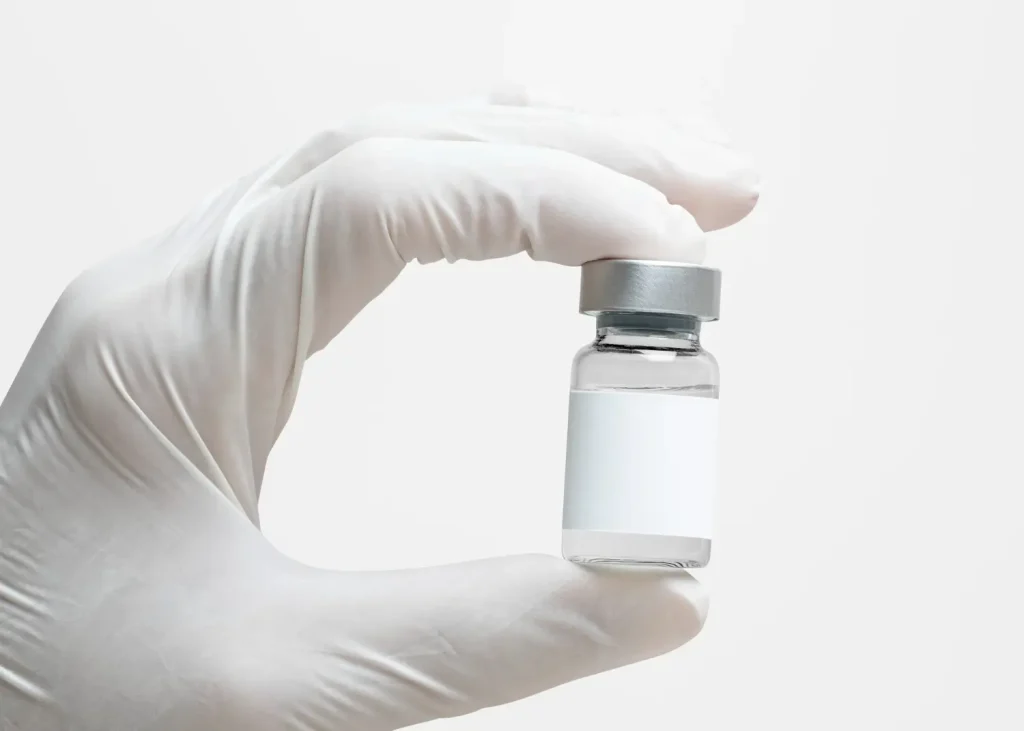Did you know that rheumatoid arthritis (RA) often affects joints symmetrically—on both sides of the body? Unlike osteoarthritis, RA is an autoimmune disease in which the immune system mistakenly attacks healthy joint tissues, leading to chronic inflammation, pain, and reduced mobility. Affecting millions worldwide, RA can severely impact daily life and requires long-term treatment strategies to control symptoms and slow disease progression.
Clinicians typically do not use Mabthera (rituximab) as a first-line therapy. Instead, they prescribe it for adults with severe active rheumatoid arthritis (RA) who have had an inadequate response or intolerance to other disease-modifying antirheumatic drugs (DMARDs), including at least one TNF inhibitor. Doctors generally prescribe it in combination with methotrexate to offer targeted relief by modifying immune system activity at its source.
In this article, we’ll explore how Mabthera works in RA management, its effectiveness, and what patients should know before starting this treatment.
Key Takeaways
- Mabthera (rituximab) is a biologic DMARD used to treat moderate to severe rheumatoid arthritis, particularly in patients who have not responded to TNF inhibitors or other conventional DMARDs.
- It targets CD20-positive B cells, reducing inflammation and slowing joint damage through immune-mediated cell depletion.
- Doctors use Mabthera in combination with methotrexate, following clinical guidelines as a second- or third-line therapy.
- Treatment typically involves two infusions two weeks apart, with effects becoming visible in 6–16 weeks, and repeat cycles considered every 6 months if symptoms return.
- Ideal candidates are seropositive RA patients with positive RF or anti-CCP antibodies and no history of severe infections or hepatitis B.
- Mabthera offers a targeted, non-continuous therapy that reduces overall immunosuppressive exposure while maintaining long-term disease control.
About: Medical Spa RX provides medical practices with premium products at the best prices. If you’re looking to buy Mabthera for your practice, the sales representatives at Medical Spa RX can give you guidance.
Mabthera Mechanism of Action: Targeting CD20-Positive B Cells
Mabthera (rituximab) functions by targeting the CD20 protein found on the surface of specific B cells. These cells play a central role in the autoimmune processes of rheumatoid arthritis (RA). These cells contribute to inflammation by producing autoantibodies and releasing cytokines that perpetuate joint damage.

Mabthera binds to CD20, flagging these cells for destruction via complement-dependent cytotoxicity (CDC) and antibody-dependent cellular cytotoxicity (ADCC). This selective depletion helps reduce chronic inflammation and slows disease progression. Importantly, Mabthera does not affect stem cells or plasma cells, allowing for immune reconstitution over time—a distinct advantage over broad immunosuppressive agents.
When to Introduce Mabthera in Rheumatoid Arthritis Treatment Protocols
Mabthera is not a first-line therapy for RA. They prescribe Mabthera for patients with moderate to severe active disease who have had an inadequate response or intolerance to at least one TNF inhibitor and other DMARDs. According to the Mabthera FDA approval, it is combined with methotrexate, in line with EULAR and ACR treatment guidelines.
Before beginning therapy, clinicians should screen for infections—especially hepatitis B—and update any vaccinations. Patients should also undergo baseline evaluations to minimize risks and identify contraindications. The introduction of Mabthera is a strategic decision that follows careful review of the patient’s treatment history and disease activity.
Clinical Response Timeline and Repeat Dosing Strategy for Mabthera
A standard Mabthera regimen for RA involves two intravenous infusions spaced two weeks apart. Patients typically notice symptom relief within 6 to 8 weeks, although the peak therapeutic response may not occur until 12 to 16 weeks post-treatment.

Clinicians usually perform repeat dosing after 6 months or when disease symptoms flare up again. Unlike other biologic treatments, which are administered regularly, Mabthera allows for intermittent treatment cycles, reducing long-term exposure. Each subsequent course mirrors the original two-dose protocol. Monitoring through clinical assessments and lab tests is essential for determining the need for repeat dosing and ensuring patient safety.
Patient Selection and Predictors of Good Response to Mabthera
Appropriate patient selection enhances Mabthera’s effectiveness and safety. It is usually reserved for those with:
- Seropositive RA, particularly those testing positive for RF or anti-CCP antibodies
- Moderate to severe active disease unresponsive to TNF inhibitors or other biologic DMARDs
- No active or latent tuberculosis or hepatitis B
- Stable renal and hepatic function
Patients with seropositive RA and early introduction of Mabthera following TNF-inhibitor failure tend to experience better outcomes. These predictors can guide physicians in offering Mabthera to those most likely to benefit, ensuring judicious use of the treatment.
Conclusion
Mabthera represents an important biologic therapy for rheumatoid arthritis patients who have exhausted other treatment options. By targeting CD20-positive B cells, it provides a disease-modifying approach that alleviates symptoms and slows joint damage without widespread immune suppression.
When used in combination with methotrexate and integrated into a monitored treatment protocol, Mabthera can deliver meaningful improvements in joint function, pain relief, and quality of life.
FAQs
1. What is Mabthera used for?
Doctors primarily use Mabthera to treat RA, certain types of lymphoma, and chronic lymphocytic leukemia.
2. How is Mabthera administered?
Healthcare professionals administer Mabthera as an intravenous infusion, typically over several hours in a clinical setting.
3. What are the common side effects of Mabthera?
Side effects may include infusion reactions, fatigue, fever, headache, or increased risk of infections.
4. How often can Mabthera be repeated?
Repeat dosing usually occurs every 6 to 12 months, based on disease activity and patient response.
5. Is Mabthera safe during pregnancy?
Clinicians do not recommend Mabthera during pregnancy due to potential risks to the developing fetus.
6. Does Mabthera weaken the immune system?
It selectively reduces B cells, which may increase infection risk, but it doesn’t broadly suppress all immune function.
7. Can Mabthera be used with other RA drugs?
Yes, doctors often use Mabthera in combination with methotrexate and other supportive therapies to enhance treatment effects.
References
Rheumatoid Arthritis Quiz: Symptoms, Signs, Treatment & Causes. MedicineNet. https://www.medicinenet.com/rheumatoid_arthritis_quiz/quiz.htm
World Health Organization. Rheumatoid arthritis. World Health Organization. Published 2023. https://www.who.int/news-room/fact-sheets/detail/rheumatoid-arthritis
MabThera: Uses, Side Effects, Benefits/Risks. Drugs.com. Published 2025. Accessed April 29, 2025. https://www.drugs.com/uk/mabthera.html





















